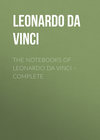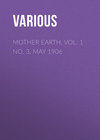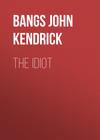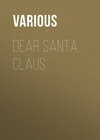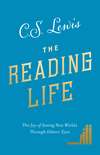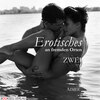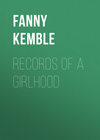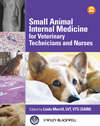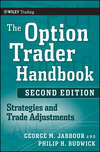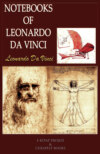Kitabı oku: «The Notebooks of Leonardo Da Vinci. Complete», sayfa 22
561
OF SHADOWS.
Where a shadow ends in the light, note carefully where it is paler or deeper and where it is more or less indistinct towards the light; and, above all, in [painting] youthful figures I remind you not to make the shadow end like a stone, because flesh has a certain transparency, as may be seen by looking at a hand held between the eye and the sun, which shines through it ruddy and bright. Place the most highly coloured part between the light and shadow. And to see what shadow tint is needed on the flesh, cast a shadow on it with your finger, and according as you wish to see it lighter or darker hold your finger nearer to or farther from your picture, and copy that [shadow].
On the lighting of the background (562-565).
562
OF THE BACKGROUNDS FOR PAINTED FIGURES.
The ground which surrounds the forms of any object you paint should be darker than the high lights of those figures, and lighter than their shadowed part: &c.
563
OF THE BACKGROUND THAT THE PAINTER SHOULD ADOPT IN HIS WORKS.
Since experience shows us that all bodies are surrounded by light and shade it is necessary that you, O Painter, should so arrange that the side which is in light shall terminate against a dark body and likewise that the shadow side shall terminate against a light body. And by [following] this rule you will add greatly to the relief of your figures.
564
A most important part of painting consists in the backgrounds of the objects represented; against these backgrounds the outlines of those natural objects which are convex are always visible, and also the forms of these bodies against the background, even though the colours of the bodies should be the same as that of the background. This is caused by the convex edges of the objects not being illuminated in the same way as, by the same light, the background is illuminated, since these edges will often be lighter or darker than the background. But if the edge is of the same colour as the background, beyond a doubt it will in that part of the picture interfere with your perception of the outline, and such a choice in a picture ought to be rejected by the judgment of good painters, inasmuch as the purpose of the painter is to make his figures appear detached from the background; while in the case here described the contrary occurs, not only in the picture, but in the objects themselves.
565
That you ought, when representing objects above the eye and on one side—if you wish them to look detached from the wall—to show, between the shadow on the object and the shadow it casts a middle light, so that the body will appear to stand away from the wall.
On the lighting of white objects.
566
HOW WHITE BODIES SHOULD BE REPRESENTED.
If you are representing a white body let it be surrounded by ample space, because as white has no colour of its own, it is tinged and altered in some degree by the colour of the objects surrounding it. If you see a woman dressed in white in the midst of a landscape, that side which is towards the sun is bright in colour, so much so that in some portions it will dazzle the eyes like the sun itself; and the side which is towards the atmosphere,—luminous through being interwoven with the sun's rays and penetrated by them—since the atmosphere itself is blue, that side of the woman's figure will appear steeped in blue. If the surface of the ground about her be meadows and if she be standing between a field lighted up by the sun and the sun itself, you will see every portion of those folds which are towards the meadow tinged by the reflected rays with the colour of that meadow. Thus the white is transmuted into the colours of the luminous and of the non-luminous objects near it.
The methods of aerial (567—570).
567
WHY FACES [SEEN] AT A DISTANCE LOOK DARK.
We see quite plainly that all the images of visible objects that lie before us, whether large or small, reach our sense by the minute aperture of the eye; and if, through so small a passage the image can pass of the vast extent of sky and earth, the face of a man—being by comparison with such large images almost nothing by reason of the distance which diminishes it,—fills up so little of the eye that it is indistinguishable. Having, also, to be transmitted from the surface to the sense through a dark medium, that is to say the crystalline lens which looks dark, this image, not being strong in colour becomes affected by this darkness on its passage, and on reaching the sense it appears dark; no other reason can in any way be assigned. If the point in the eye is black, it is because it is full of a transparent humour as clear as air and acts like a perforation in a board; on looking into it it appears dark and the objects seen through the bright air and a dark one become confused in this darkness.
WHY A MAN SEEN AT A CERTAIN DISTANCE IS NOT RECOGNISABLE.
The perspective of diminution shows us that the farther away an object is the smaller it looks. If you look at a man at a distance from you of an arrow's flight, and hold the eye of a small needle close to your own eye, you can see through it several men whose images are transmitted to the eye and will all be comprised within the size of the needle's eye; hence, if the man who is at the distance of an arrow's flight can send his whole image to your eye, occupying only a small space in the needle's eye how can you [expect] in so small a figure to distinguish or see the nose or mouth or any detail of his person? and, not seeing these you cannot recognise the man, since these features, which he does not show, are what give men different aspects.
568
THE REASON WHY SMALL FIGURES SHOULD NOT BE MADE FINISHED.
I say that the reason that objects appear diminished in size is because they are remote from the eye; this being the case it is evident that there must be a great extent of atmosphere between the eye and the objects, and this air interferes with the distinctness of the forms of the object. Hence the minute details of these objects will be indistinguishable and unrecognisable. Therefore, O Painter, make your smaller figures merely indicated and not highly finished, otherwise you will produce effects the opposite to nature, your supreme guide. The object is small by reason of the great distance between it and the eye, this great distance is filled with air, that mass of air forms a dense body which intervenes and prevents the eye seeing the minute details of objects.
569
Whenever a figure is placed at a considerable distance you lose first the distinctness of the smallest parts; while the larger parts are left to the last, losing all distinctness of detail and outline; and what remains is an oval or spherical figure with confused edges.
570
OF PAINTING.
The density of a body of smoke looks white below the horizon while above the horizon it is dark, even if the smoke is in itself of a uniform colour, this uniformity will vary according to the variety in the ground on which it is seen.
IV
OF PORTRAIT AND FIGURE PAINTING
Of sketching figures and portraits (571-572).
571
OF THE WAY TO LEARN TO COMPOSE FIGURES [IN GROUPS] IN HISTORICAL PICTURES.
When you have well learnt perspective and have by heart the parts and forms of objects, you must go about, and constantly, as you go, observe, note and consider the circumstances and behaviour of men in talking, quarrelling or laughing or fighting together: the action of the men themselves and the actions of the bystanders, who separate them or who look on. And take a note of them with slight strokes thus, in a little book which you should always carry with you. And it should be of tinted paper, that it may not be rubbed out, but change the old [when full] for a new one; since these things should not be rubbed out but preserved with great care; for the forms, and positions of objects are so infinite that the memory is incapable of retaining them, wherefore keep these [sketches] as your guides and masters.
[Footnote: Among Leonardo's numerous note books of pocket size not one has coloured paper, so no sketches answering to this description can be pointed out. The fact that most of the notes are written in ink, militates against the supposition that they were made in the open air.]
572
OF A METHOD OF KEEPING IN MIND THE FORM OF A FACE.
If you want to acquire facility for bearing in mind the expression of a face, first make yourself familiar with a variety of [forms of] several heads, eyes, noses, mouths, chins and cheeks and necks and shoulders: And to put a case: Noses are of 10 types: straight, bulbous, hollow, prominent above or below the middle, aquiline, regular, flat, round or pointed. These hold good as to profile. In full face they are of 11 types; these are equal thick in the middle, thin in the middle, with the tip thick and the root narrow, or narrow at the tip and wide at the root; with the nostrils wide or narrow, high or low, and the openings wide or hidden by the point; and you will find an equal variety in the other details; which things you must draw from nature and fix them in your mind. Or else, when you have to draw a face by heart, carry with you a little book in which you have noted such features; and when you have cast a glance at the face of the person you wish to draw, you can look, in private, which nose or mouth is most like, or there make a little mark to recognise it again at home. Of grotesque faces I need say nothing, because they are kept in mind without difficulty.
The position of the head.
573
HOW YOU SHOULD SET TO WORK TO DRAW A HEAD OF WHICH ALL THE PARTS SHALL AGREE WITH THE POSITION GIVEN TO IT.
To draw a head in which the features shall agree with the turn and bend of the head, pursue this method. You know that the eyes, eyebrows, nostrils, corners of the mouth, and sides of the chin, the jaws, cheeks, ears and all the parts of a face are squarely and straightly set upon the face.
[Footnote: Compare the drawings and the text belonging to them on Pl. IX. (No. 315), Pl. X (No. 316), Pl. XL (No. 318) and Pl. XII. (No. 319).]
Therefore when you have sketched the face draw lines passing from one corner of the eye to the other; and so for the placing of each feature; and after having drawn the ends of the lines beyond the two sides of the face, look if the spaces inside the same parallel lines on the right and on the left are equal [12]. But be sure to remember to make these lines tend to the point of sight.
[Footnote: See Pl. XXXI, No. 4, the slight sketch on the left hand side. The text of this passage is written by the side of it. In this sketch the lines seem intentionally incorrect and converging to the right (compare I. 12) instead of parallel. Compare too with this text the drawing in red chalk from Windsor Castle which is reproduced on Pl. XL, No. 2.]
Of the light on the face (574-576).
574
HOW TO KNOW WHICH SIDE OF AN OBJECT IS TO BE MORE OR LESS LUMINOUS THAN THE OTHER.
Let f be the light, the head will be the object illuminated by it and that side of the head on which the rays fall most directly will be the most highly lighted, and those parts on which the rays fall most aslant will be less lighted. The light falls as a blow might, since a blow which falls perpendicularly falls with the greatest force, and when it falls obliquely it is less forcible than the former in proportion to the width of the angle. Exempli gratia if you throw a ball at a wall of which the extremities are equally far from you the blow will fall straight, and if you throw the ball at the wall when standing at one end of it the ball will hit it obliquely and the blow will not tell.
[Footnote: See Pl. XXXI. No. 4; the sketch on the right hand side.]
575
THE PROOF AND REASON WHY AMONG THE ILLUMINATED PARTS CERTAIN PORTIONS ARE IN HIGHER LIGHT THAN OTHERS.
Since it is proved that every definite light is, or seems to be, derived from one single point the side illuminated by it will have its highest light on the portion where the line of radiance falls perpendicularly; as is shown above in the lines a g, and also in a h and in l a; and that portion of the illuminated side will be least luminous, where the line of incidence strikes it between two more dissimilar angles, as is seen at b c d. And by this means you may also know which parts are deprived of light as is seen at m k.
Where the angles made by the lines of incidence are most equal there will be the highest light, and where they are most unequal it will be darkest.
I will make further mention of the reason of reflections.
[Footnote: See Pl. XXXII. The text, here given complete, is on the right hand side. The small circles above the beginning of lines 5 and 11 as well as the circle above the text on Pl. XXXI, are in a paler ink and evidently added by a later hand in order to distinguish the text as belonging to the Libro di Pittura (see Prolegomena. No. 12, p. 3). The text on the left hand side of this page is given as Nos. 577 and 137.]
576
Where the shadow should be on the face.
General suggestions for historical pictures (577-581).
577
When you compose a historical picture take two points, one the point of sight, and the other the source of light; and make this as distant as possible.
578
Historical pictures ought not to be crowded and confused with too many figures.
579
PRECEPTS IN PAINTING.
Let you sketches of historical pictures be swift and the working out of the limbs not be carried too far, but limited to the position of the limbs, which you can afterwards finish as you please and at your leisure.
[Footnote: See Pl. XXXVIII, No. 2. The pen and ink drawing given there as No. 3 may also be compared with this passage. It is in the Windsor collection where it is numbered 101.]
580
The sorest misfortune is when your views are in advance of your work.
581
Of composing historical pictures. Of not considering the limbs in the figures in historical pictures; as many do who, in the wish to represent the whole of a figure, spoil their compositions. And when you place one figure behind another take care to draw the whole of it so that the limbs which come in front of the nearer figures may stand out in their natural size and place.
How to represent the differences of age and sex (582-583).
582
How the ages of man should be depicted: that is, Infancy, Childhood, Youth, Manhood, Old age, Decrepitude.
[Footnote: No answer is here given to this question, in the original MS.]
583
Old men ought to be represented with slow and heavy movements, their legs bent at the knees, when they stand still, and their feet placed parallel and apart; bending low with the head leaning forward, and their arms but little extended.
Women must be represented in modest attitudes, their legs close together, their arms closely folded, their heads inclined and somewhat on one side.
Old women should be represented with eager, swift and furious gestures, like infernal furies; but the action should be more violent in their arms and head than in their legs.
Little children, with lively and contorted movements when sitting, and, when standing still, in shy and timid attitudes.
[Footnote: bracci raccolte. Compare Pl. XXXIII. This drawing, in silver point on yellowish tinted paper, the lights heightened with white, represents two female hands laid together in a lap. Above is a third finished study of a right hand, apparently holding a veil from the head across the bosom. This drawing evidently dates from before 1500 and was very probably done at Florence, perhaps as a preparatory study for some picture. The type of hand with its slender thin forms is more like the style of the Vierge aux Rochers in the Louvre than any later works—as the Mona Lisa for instance.]
Of representing the emotions.
584
THAT A FIGURE IS NOT ADMIRABLE UNLESS IT EXPRESSES BY ITS ACTION THE PASSION OF ITS SENTIMENT.
That figure is most admirable which by its actions best expresses the passion that animates it.
HOW AN ANGRY MAN IS TO BE FIGURED.
You must make an angry person holding someone by the hair, wrenching his head against the ground, and with one knee on his ribs; his right arm and fist raised on high. His hair must be thrown up, his brow downcast and knit, his teeth clenched and the two corners of his mouth grimly set; his neck swelled and bent forward as he leans over his foe, and full of furrows.
HOW TO REPRESENT A MAN IN DESPAIR.
You must show a man in despair with a knife, having already torn open his garments, and with one hand tearing open the wound. And make him standing on his feet and his legs somewhat bent and his whole person leaning towards the earth; his hair flying in disorder.
Of representing imaginary animals.
585
HOW YOU SHOULD MAKE AN IMAGINARY ANIMAL LOOK NATURAL.
You know that you cannot invent animals without limbs, each of which, in itself, must resemble those of some other animal. Hence if you wish to make an animal, imagined by you, appear natural—let us say a Dragon, take for its head that of a mastiff or hound, with the eyes of a cat, the ears of a porcupine, the nose of a greyhound, the brow of a lion, the temples of an old cock, the neck of a water tortoise.
[Footnote: The sketch here inserted of two men on horseback fighting a dragon is the facsimile of a pen and ink drawing belonging to BARON EDMOND DE ROTHSCHILD of Paris.]
The selection of forms.
586
OF THE DELUSIONS WHICH ARISE IN JUDGING OF THE LIMBS.
A painter who has clumsy hands will paint similar hands in his works, and the same will occur with any limb, unless long study has taught him to avoid it. Therefore, O Painter, look carefully what part is most ill-favoured in your own person and take particular pains to correct it in your studies. For if you are coarse, your figures will seem the same and devoid of charm; and it is the same with any part that may be good or poor in yourself; it will be shown in some degree in your figures.
587
OF THE SELECTION OF BEAUTIFUL FACES.
It seems to me to be no small charm in a painter when he gives his figures a pleasing air, and this grace, if he have it not by nature, he may acquire by incidental study in this way: Look about you and take the best parts of many beautiful faces, of which the beauty is confirmed rather by public fame than by your own judgment; for you might be mistaken and choose faces which have some resemblance to your own. For it would seem that such resemblances often please us; and if you should be ugly, you would select faces that were not beautiful and you would then make ugly faces, as many painters do. For often a master's work resembles himself. So select beauties as I tell you, and fix them in your mind.
588
Of the limbs, which ought to be carefully selected, and of all the other parts with regard to painting.
589
When selecting figures you should choose slender ones rather than lean and wooden ones.
590
OF THE MUSCLES OF ANIMALS.
The hollow spaces interposed between the muscles must not be of such a character as that the skin should seem to cover two sticks laid side by side like c, nor should they seem like two sticks somewhat remote from such contact so that the skin hangs in an empty loose curve as at f; but it should be like i, laid over the spongy fat that lies in the angles as the angle n m o; which angle is formed by the contact of the ends of the muscles and as the skin cannot fold down into such an angle, nature has filled up such angles with a small quantity of spongy and, as I may say, vesicular fat, with minute bladders [in it] full of air, which is condensed or rarefied in them according to the increase or the diminution of the substance of the muscles; in which latter case the concavity i always has a larger curve than the muscle.
591
OF UNDULATING MOVEMENTS AND EQUIPOISE IN FIGURES AND OTHER ANIMALS.
When representing a human figure or some graceful animal, be careful to avoid a wooden stiffness; that is to say make them move with equipoise and balance so as not to look like a piece of wood; but those you want to represent as strong you must not make so, excepting in the turn of the head.
How to pose figures.
